Make a donation to the museum
A Tribute to Remember, Marched to Ground Zero in a Floral Cavalcade, Courtesy of Colombia
A Tribute to Remember, Marched to Ground Zero in a Floral Cavalcade, Courtesy of Colombia
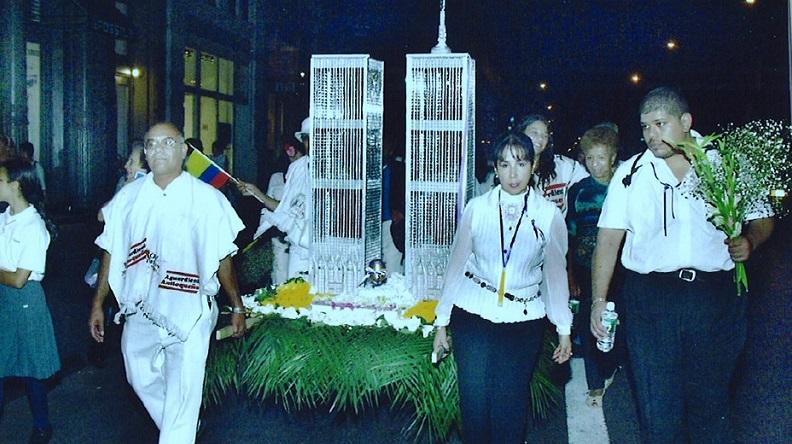
The 9/11 Memorial Museum is safekeeper of a diversity of tribute gestures honoring the 2,977 men, women, and children killed in the 2001 terror attacks. These range from the elaborate to the ephemeral, by named as well as anonymous makers. Many convey condolences from the creator or sender’s home city, whether Edinburgh, Indiana, or Edinburgh, Scotland.
Within these holdings is a subset of tributes reflecting the internationalism of the day’s human toll, informed by traditions specific to, or evocative of the countries touched by this mass-casualty tragedy. Twin Towers by folk artist Sara Grijalva is a case study of the event’s reverberations through the global city of New York, with its large Hispanic population, and particularly as felt by the transnational Colombian community rooted in the borough of Queens.
According to the 2000 Census, by the new millennium approximately 110,000 city residents self-identified as Colombian, a number that omitted relatives, friends, and business associates who traveled frequently from and between South America and the metropolitan New York region. Grijalva herself had immigrated from Colombia in the 1980s, settling in the Queens neighborhood of Elmhurst. A month after the September 11 attacks, she attended a Spanish-language mass at St. Patrick’s Cathedral in remembrance of 27 of her Colombian countrymen whose jobs—documented and undocumented—were linked to the World Trade Center. Victim demographics by nationality fluctuated for months thereafter. Eventually, Colombia’s count of fatalities lowered to 17.
In a 2008 oral history, Grijalva explained the lineage of her Twin Towers sculpture preserved in the Museum’s collection. The original, created for the October 10, 2001 prayer service at St. Patrick’s Cathedral, represented a miniaturized model of the World Trade Center site. Crafted from paraffin wax, it succumbed to a heat exposure accident soon thereafter.
An opportunity to recreate its successor arrived two years later, through an overture from Eduardo Giraldo, president of the Hispanic Chamber of Commerce in Queens. With the second anniversary of 9/11 nearing, he proposed an ambitious collaboration: the coupling of Grijalva’s creative skills—this time, using more durable materials and working at a larger scale—with an authentic and reverent Silletero procession through lower Manhattan, culminating at Ground Zero. Inspired by the festive parades held in Medellín, Colombia, during growing season, this march would showcase the workmanship of native flower growers and vendors—campesinos—who traditionally carried their colorful cargo loads to market on wooden frames strapped to their backs. In this sea of perishable floral offerings, Grijalva’s pair of tall, silver shafts would catch the eye as a unique counterpoint.
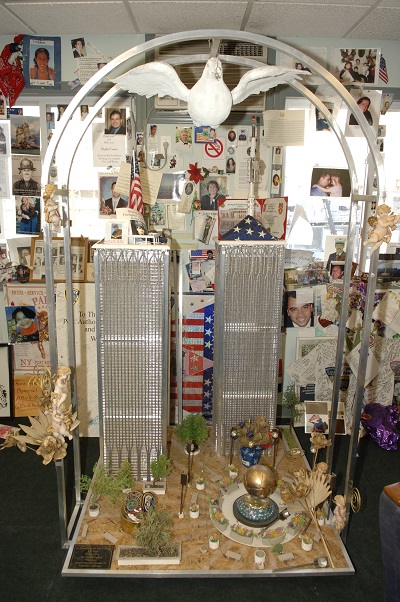
Gift of the Hispanic Chamber of Commerce, Edvardo Giraldo, president and Sara Grijalva
The parallel initiatives progressed quickly. Giraldo took charge of project logistics and permits, procurement of supplies, and raising sponsorship funds for the round-trip travel of 38 participating craftsmen from the Andes mountain region above Medellín. Because 70 percent of Colombia’s fresh flower crop was then exported to the United States, facilitated through wholesalers in Queens, provisioning the botanic silletas would be effortless. The procession’s date and time were confirmed for the evening of September 10, 2003.
Simultaneously, the artist set to work researching her construction and gathering donated materials for it, consisting of wood, wire mesh, plastic, dried flowers, and the makings for papier-mâché. In three weeks’ time, Grijalva’s Twin Towers were topped out at vertical height of almost 7 feet, supported on a 48-inch square base replicating the Austin J. Tobin Plaza, centering by a diminutive facsimile of Fritz Koenig’s Sphere. Other features included toy-scale benches, planters filled with dried flowers, a lighting program, and landscaping consisting of faux trees and ornamentation made from organic materials. From an arch spanning over the ensemble she suspended a white papier-mâché dove, seemingly airborne. It bore prayers for peace, hope, and comfort.
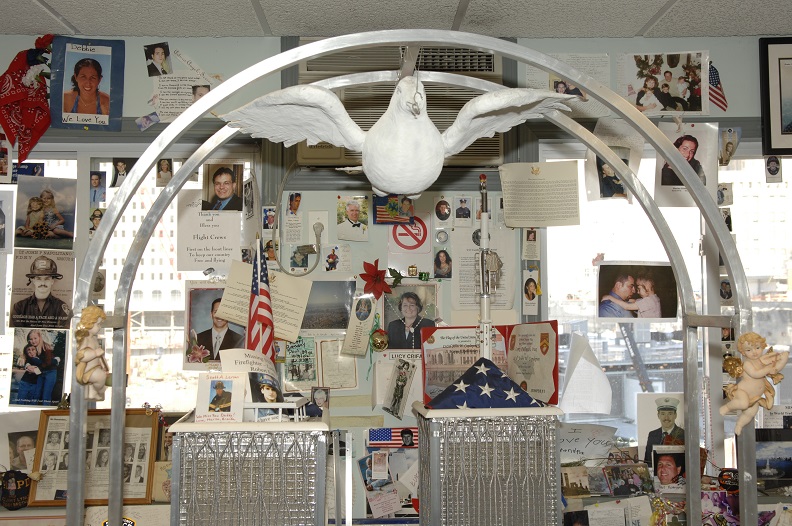
Gift of the Hispanic Chamber of Commerce, Edvardo Giraldo, president and Sara Grijalva
The dove’s prominence merits a note in light of Grijalva’s associations with Medellín. In 1995, Colombians were horrified when a leftist guerilla group dynamited a monumental bronze statue of a dove situated in that city’s San Antonio Plaza. The piece was by hometown sculptor and renowned artist Fernando Botero (b. 1932). The blast killed 22 people attending an outdoor concert and injured several hundred others nearby. Ironically, the terrorists rationalized the bombing as an act of protest against government peace talks then underway, which had omitted their representatives. Outraged, Botero refused to allow removal of the violated sculpture. Instead, he furnished the community with an identical, unmarred dove, unveiled on the same plaza in 2000. There, it keeps company with the brutalized bird of peace, into which the names of those murdered had been inscribed. Together, the paired doves suggest the timeless aspiration for peace as well as the ceaseless vigilance that nonviolence requires.
With nightfall on Wednesday, September 10, participants gathered for the memorial procession, Grijalva assumed her position within the line up of representatives from New York’s Hispanic community and the Queens Chamber of Commerce, families of Colombia’s victims, local first responders, and the intrepid Sillerteros from Medellín. Photographs of the event by John Caballero document the elaborate, woven garlands and wreathes that were carried, some dedicated to specific municipal and emergency service agencies, others assembled to represent notable landmarks and symbols, like the Statue of Liberty and flags of New York State and Colombia. Caballero also captured the proud artist escorting her tribute within the parade.
After reaching the fencing that edged the former World Trade Center superblock, the marchers surrendered their offerings, Grijalva as well. Many floral arrangements remained visible through the anniversary commemoration and for days thereafter, until they wilted.
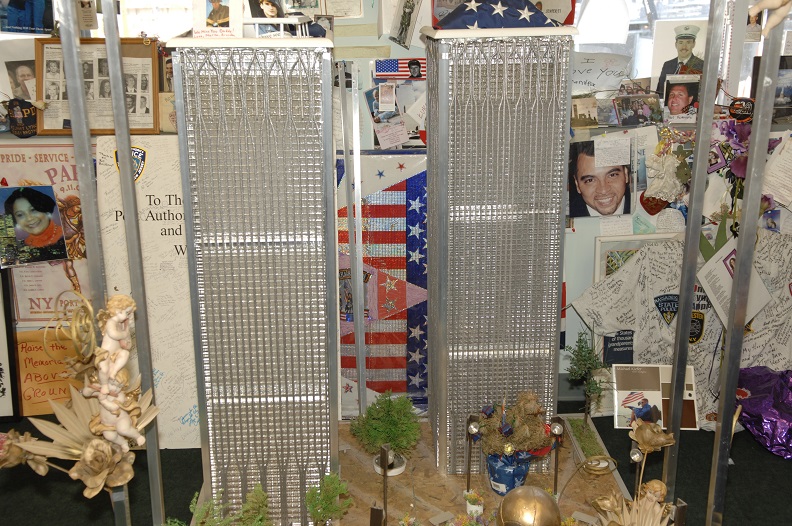
Gift of the Hispanic Chamber of Commerce, Edvardo Giraldo, president and Sara Grijalva
Although its fate was uncertain, the artist’s Twin Towers went on to enjoy a meaningful afterlife. Appreciating the tribute’s artfulness and sincerity of feeling, Port Authority personnel on site adopted it for display inside the Ground Zero Family Trailer. Managed by the Port Authority Police Department, the trailer offered privacy, safety, warmth, and especially proximity to victims’ relatives intent on seeing and reflecting at the place where the lives of their loved ones had ended so incomprehensibly. Within the trailer’s interior, family members arranged mementoes, cards, and pictures. Without an actual claim of kinship to someone killed on 9/11, Grijalva felt honored to contribute her sculpture to this secular chapel filled with intimate tokens of loss and love. For several years, she returned as a special guest to neaten and refresh the piece, sometimes bringing an evergreen branch or palm fronds to leave on its “plaza.”
By the winter of 2007, with construction activity thrumming around it, the Family Trailer could no longer remain in its original location immediately south of the site. A similar but smaller facility would be substituted for it and shifted to a less vulnerable setting. Victims’ next-of-kin mobilized a volunteer committee to pack up the aggregate offerings brought to the trailer until a substitute venue was readied. The New York State Museum would later acquire this first trailer, which had been stored by the Port Authority at JFK Airport. Their staff worked with 9/11 family member to restage its contents, on exhibit today at the New York State Museum in Albany.
The dimensions of Grijalva’s tribute hampered a convenient storage solution. The timing of the Family Trailer’s disassembly nevertheless proved auspicious for the newly arrived 9/11 Memorial Museum, with its mission to acquire and preserve evidence of the attacks, their legacy, and those directly affected by this 2001 crime against humanity. Port Authority representatives reached out to inquire if Twin Towers might be of interest to our collection in formation. Introductions to Sara Grijalva and Eduardo Giraldo followed, resulting in their transfer of the tribute to the Museum. Accompanying the artwork were their impressive accounts of its creation and of the Silletero procession organized to dramatize Colombia’s sympathy and pledge to remember. The donation from the artist and her sponsor bears the generous credit line, “In Memory of All the Victims | 9-11-2001.”
By Jan S. Ramirez, Executive Vice President of Collections & Chief Curator, 9/11 Memorial & Museum
Previous Post
Upcoming Public Program: “In Pursuit of Justice: Integrating Intelligence”

We are pleased to present the next program in our When the World Changes digital conversation series at 2 p.m. ET on Monday, October 26.
Next Post
Educational Activities to Try from Home
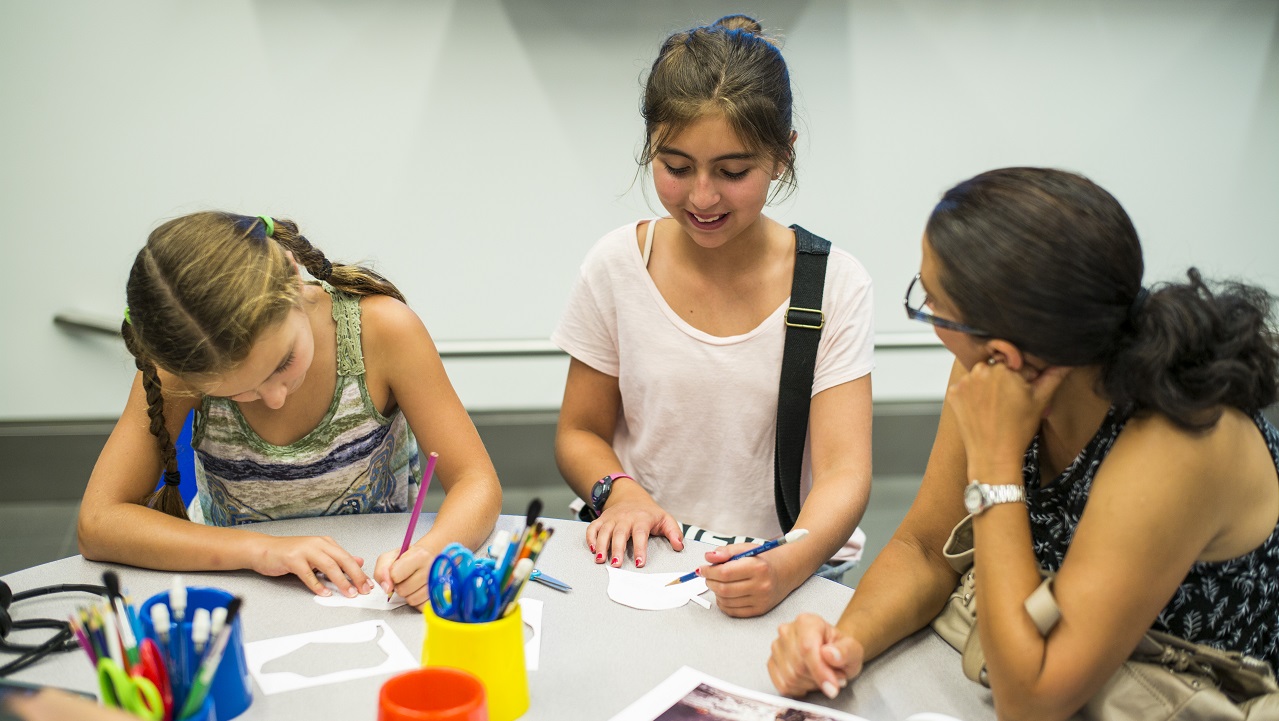
The 9/11 Memorial & Museum is committed to providing students and teachers the tools to understand what happened on 9/11 and how the attacks continue to impact our lives. From art activities to virtual field trips, we offer a variety of learning opportunities for all ages.